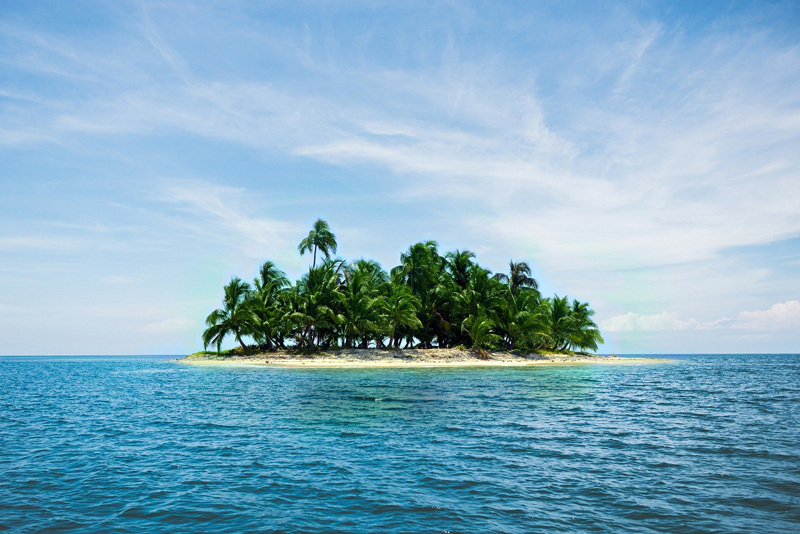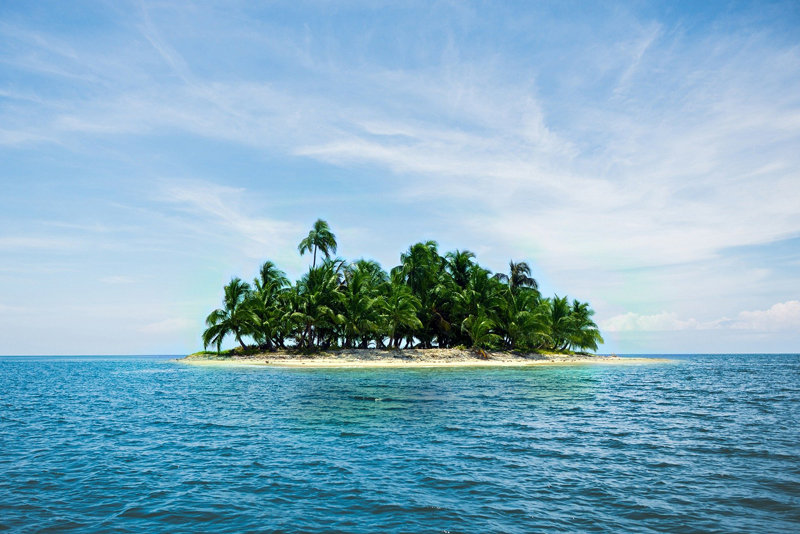Lamu Island - Kenyan Old World Charm

Do you long for the days when you could visit a tropical island that hadn’t become completely commercialized? Do you truly want that “away from it all” feeling while still having the benefits of sandy beaches, tropical fish-filled waters and gorgeous sunsets? Then the island of Lamu may be just what you’re looking for. Although relatively recently “discovered” by European jet-setters, this island off the northern coast of Kenya still retains an old-world charm while allowing leisurely strolls along nearly deserted white sand beaches.
When you get to Lamu, be prepared for a slower pace. First of all, you can only get here by boat – either from the tiny airstrip on Manda Island across the bay from Lamu, or from the Kenyan coast. Once here, the only transportation around the island is on foot, on bicycle, by donkeys, or by dhows – picturesque Arab sailboats with lateen sails. (There are apparently less than a dozen cars in total on the island.)
Most tourists tend to stay in the more developed area of Shela, on the south side of the island. And from Shela you have access to the “best” beach on Lamu – about 12 km. of white sand with usually large waves since there is no protective reef. But don’t expect a typical tourist town here. There may be some luxurious accommodations mixed in with the more modest ones, but the streets are still essentially dirt alleyways, usually spotted with donkey droppings.
The best part of Lamu is the Old Town – designated as a World Heritage Site by the United Nations this is an ancient Swahili settlement with a port that has existed for at least a thousand years. From Shela it is about a 30-45 minute walk or a 10 - 15 minute sail by dhow. A narrow maze of alleyways twists among buildings made of coral, sand and lime with elaborately carved wooden doors and shutters. You can also visit artisans still crafting these beautiful doors. Or you can tour the restored Lamu Fort, visit the Swahili House Museum to view the traditional beds and period furniture, or enjoy the musical instrument display in the Lamu Museum. And, of course, check out the local market and try some fresh mangoes!
The population of Lamu is primarily Muslim so you will hear the regular calls to prayers from the 30 or so mosques on the island. The Pwani Mosque is apparently the oldest, dating back to the 14th century. But the Jumaa Mosque is probably the most photographed due to its “pepper-pot minaret”.
Another popular activity while staying on Lamu is to take dhow sailing trips to nearby islands in the Lamu Archipelago. For those interested in history, definitely visit the Takwa ruins on Manda Island – the remains of an ancient Swahili city abandoned in the 17th century for unknown reasons. If you want to explore the underwater life of the Indian Ocean, then the best snorkeling sites are reputed to be the island of Manda Toto or the marine reserve at the island of Kiwayu; but remember to go between November and March to enjoy clear visibility in the water. Or, as an adventurous alternative, how about a kayaking trip through the mangroves?
And if you don’t mind a bit more of a crowd, but want to see a bit more of the culture, then you might visit Lamu during the festival of Maulidi in the spring. Besides all of the normal attractions of Lamu, you could enjoy donkey races, dhow sailing events, or displays of traditional dance.
So think about Lamu the next time you want an exotic island adventure away from it all. But if you’re going to visit, do it soon. Sadly, the Kenyan government is planning to build a major seaport on the coast near Lamu Island, which is anticipated will have a fairly negative impact on the old-world charm of the island as well as on the surrounding marine environment.
Note: no promotional consideration was provided or paid for this article.
When you get to Lamu, be prepared for a slower pace. First of all, you can only get here by boat – either from the tiny airstrip on Manda Island across the bay from Lamu, or from the Kenyan coast. Once here, the only transportation around the island is on foot, on bicycle, by donkeys, or by dhows – picturesque Arab sailboats with lateen sails. (There are apparently less than a dozen cars in total on the island.)
Most tourists tend to stay in the more developed area of Shela, on the south side of the island. And from Shela you have access to the “best” beach on Lamu – about 12 km. of white sand with usually large waves since there is no protective reef. But don’t expect a typical tourist town here. There may be some luxurious accommodations mixed in with the more modest ones, but the streets are still essentially dirt alleyways, usually spotted with donkey droppings.
|
The population of Lamu is primarily Muslim so you will hear the regular calls to prayers from the 30 or so mosques on the island. The Pwani Mosque is apparently the oldest, dating back to the 14th century. But the Jumaa Mosque is probably the most photographed due to its “pepper-pot minaret”.
Another popular activity while staying on Lamu is to take dhow sailing trips to nearby islands in the Lamu Archipelago. For those interested in history, definitely visit the Takwa ruins on Manda Island – the remains of an ancient Swahili city abandoned in the 17th century for unknown reasons. If you want to explore the underwater life of the Indian Ocean, then the best snorkeling sites are reputed to be the island of Manda Toto or the marine reserve at the island of Kiwayu; but remember to go between November and March to enjoy clear visibility in the water. Or, as an adventurous alternative, how about a kayaking trip through the mangroves?
And if you don’t mind a bit more of a crowd, but want to see a bit more of the culture, then you might visit Lamu during the festival of Maulidi in the spring. Besides all of the normal attractions of Lamu, you could enjoy donkey races, dhow sailing events, or displays of traditional dance.
So think about Lamu the next time you want an exotic island adventure away from it all. But if you’re going to visit, do it soon. Sadly, the Kenyan government is planning to build a major seaport on the coast near Lamu Island, which is anticipated will have a fairly negative impact on the old-world charm of the island as well as on the surrounding marine environment.
Note: no promotional consideration was provided or paid for this article.

Related Articles
Editor's Picks Articles
Top Ten Articles
Previous Features
Site Map
Content copyright © 2023 by Laura Hartney. All rights reserved.
This content was written by Laura Hartney. If you wish to use this content in any manner, you need written permission. Contact Malika Bowling for details.




